The Temple Mount Sifting Project reported a significant improvement of the enforcement and supervision of the Israeli Antiquities laws on the Temple Mount. The Old City and the Temple Mount are part of the archaeological zone, in which no excavations are allowed without archaeological supervision. As far as the Temple Mount is concerned however, this rule has been ignored for too long. Happily, the construction work that is taking place at the moment, digging shallow channels in the area just northwest of the Raised Platform, is being carried out under the supervision of the Israel Antiquities Authority.

This is good news, as I believe that there are many archaeological remains still to be uncovered in the area under discussion and any fresh information may cast light on the historical development of the Temple Mount and the city of Jerusalem. We need to remember, of course, that this area became part of the Temple Mount for the first time only in the Herodian period. During the First Temple period, this area was located outside and north of the Temple Mount and the city of Jerusalem. The northern wall of the Temple Mount of that time was also part of the northern city wall of Jerusalem.
Charles Warren uncovered the most important archaeological remains in this area, namely the “Fosse” or “Moat” that separated the original square Temple Mount from the northern continuation of the Eastern Hill of Jerusalem. Although never excavated, the remains can clearly be seen in old photographs, taken from the Antonia Fortress.

While working on the Temple Mount Excavations in the 1970’s, we also documented some archaeological remains in this area. We photographed a stretch of Herodian paving stones that had been recorded previously. The large size of these paving stones, which are now buried underneath a thick layer of soil planted with olive trees, is similar to other Herodian pavers found in the Temple Mount Excavations.
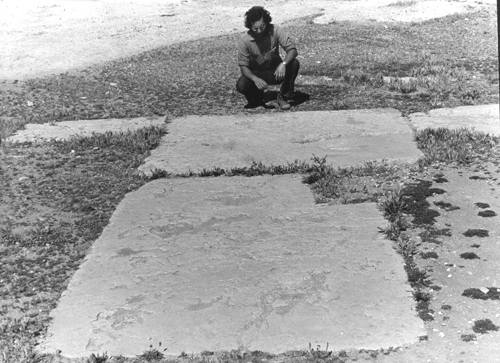
Just north of the raised Platform and south of the Fosse, we also documented the remains of a wall and door sill.
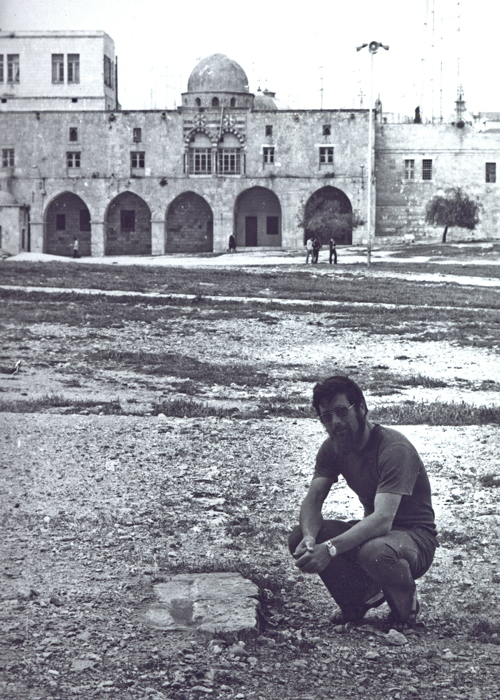
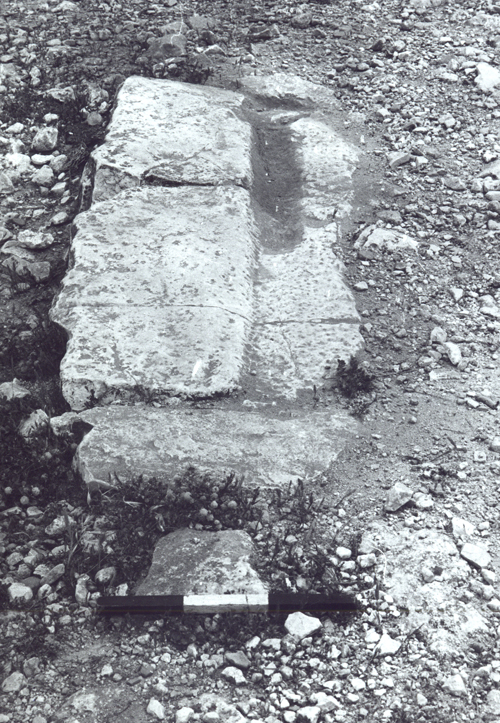
At the northern edge of the Fosse, about 100 years before our excavations, Warren had discovered a long channel (which he labelled the “ditch cut in the rock”). This was designed to prevent running water from disappearing into the Fosse or “Excavated Ditch”(The Quest, p.42).
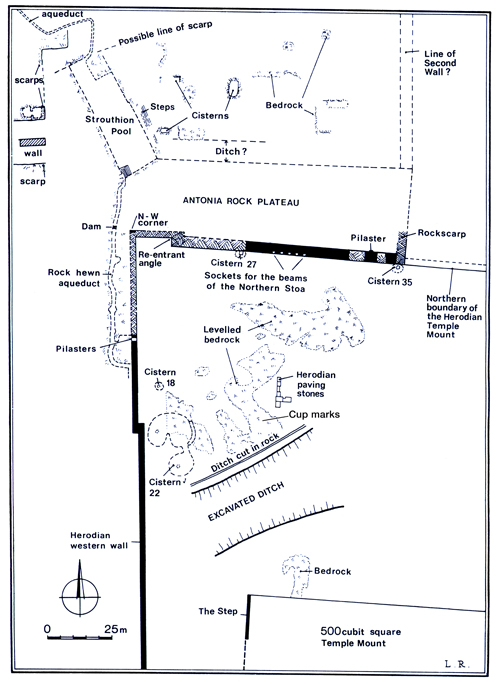
In the rock surface nearby are some other remains that are less well known, namely the cup marks that were recorded by Bellarmino Bagatti.
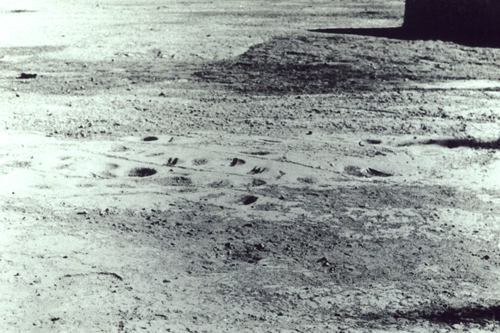
Also on the western side of this area of the Temple Mount are the two cisterns, 18 and 22 (see plan above). We have suggested (The Quest, p.42) that the small Cistern 18 may have acted as a sump for the much larger Cistern 22, which received its water from the Rock-hewn Aqueduct that runs through the Tyropoeon Valley, starting north of the Damascus Gate. One wonders if and how these elements are connected.
There are several passages in the Hebrew Bible that mention “the conduit of the upper pool, which is in the highway of the fuller’s field”. But where was the “Fuller’s Field?” A fuller uses lye or alkali soap to bleach cloth (Jer. 2.22 and Mal. 3.2). These are smelly substances and therefore fuller’s fields are usually found outside cities. In order to wash out these ingredients, a lot of water is needed.
Is it possible that the archaeological remains have something to do with the location of the Fuller’s Field? In Isaiah 7.3 we read that the prophet was sent outside the city walls to meet with King Ahaz, who apparently was inspecting the city’s waterworks. At this time, the prophet Isaiah delivers his famous Immanuel prophecy.
Can it be that Cistern 22 is the Upper Pool, used by the fuller, who spread out his cloth on the bedrock in this area and used the cup marks in the rock to store his soap? In that case, the Rock-hewn Aqueduct would have been the conduit, or channel, that filled the pool or cistern. It was located in the Central Valley, later called the Tyropoeon Valley, where the road from the west would have come in.. This would have been the road taken by Rabshakeh and his army when he was sent from Lachish to Jerusalem by Sennacherib King of Assyria to request the city’s surrender by Hezekiah (Isa. 36.2, 2 Kings 18.17), while he stood at “the conduit of the upper pool, which is in the highway of the fuller’s field”.
The prospects of excavations in this area are slim, but it is reassuring to know that there will be archaeological supervision on future construction projects on the Temple Mount. On this site, with all its sensibilities, any remains uncovered are doubly precious, being our only source of new information on how the area developed during its long and dramatic history.
HT: Joe Lauer

very interesting info Leen thank you for sharing. Trust you are both well
On a recent visit to the Temple Mount, someone pointed out a similar door sill- that is, you could see where the hinge had been. It was at the north-east corner of the Raised Platform. Unfortunately, it was on its side and almost certainly had been moved from somewhere else.
Is is true that the notches on a number of the modern paving stones indicate that they originally held mezuzot, and were taken from homes elsewhere in the Old City?
If a door sill stone has been removed, we can’t tell the age or where it came from.
Many stones have natural notches. Unless there are signs of fixings, it is difficult to know if it was a mezuzah.
Wonderful bit of news. Its so refreshing to read that Archaeology of the area is still alive and well instead of being stagnated by politics.
יישר כחך על העידכונים
תודה, אלי